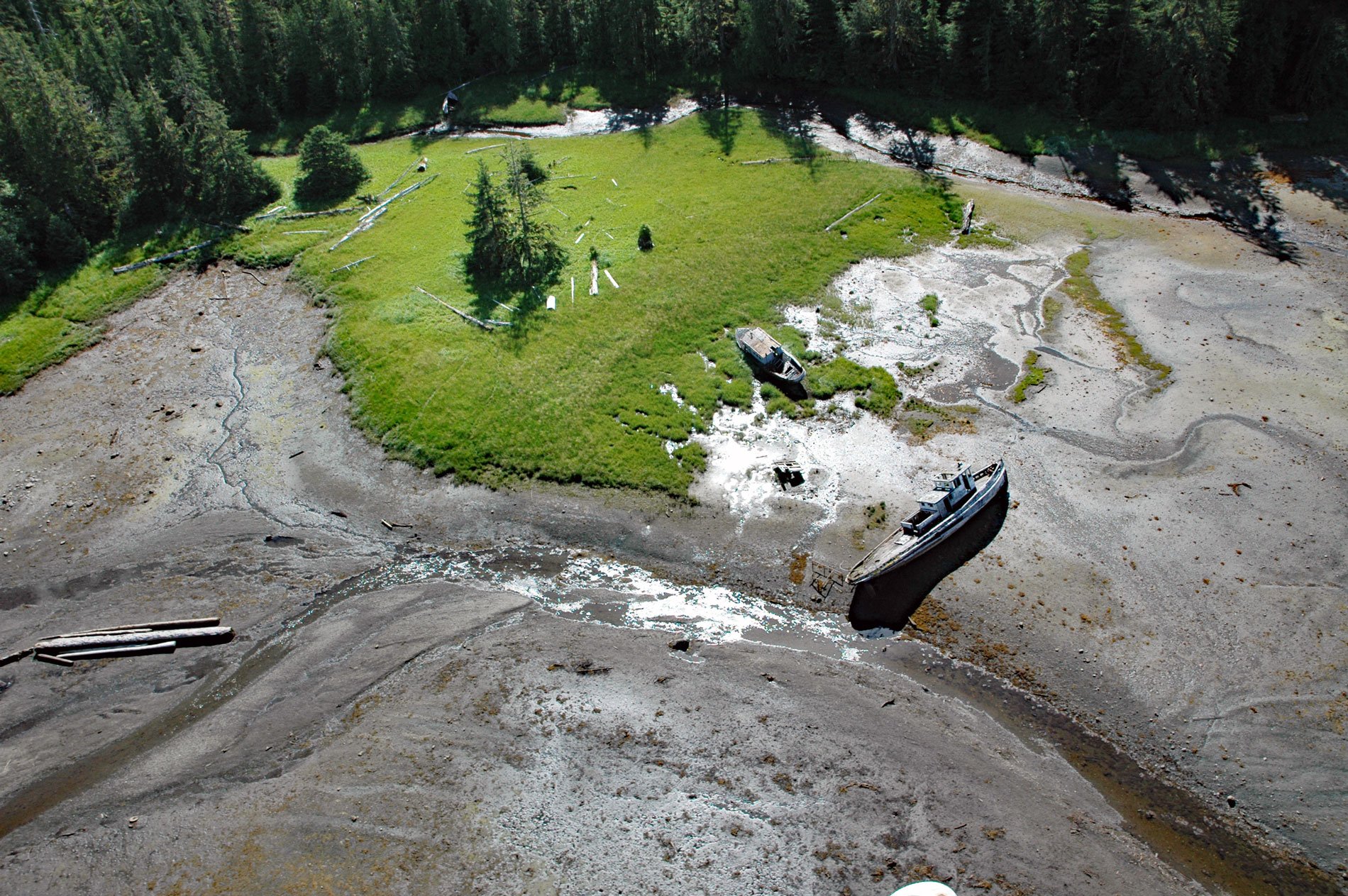Edna Bay is a community situated on 17,280 acres (6993 ha) in the Tongass National Forest on the southeast coast of Kosciusko Island off the northwest coast of Prince of Wales Island, about 61 miles (98 km) southwest of Wrangell and 18 miles (29 km) west-northwest of Naukati Bay, Alaska. The village is named after the embayment of Edna Bay which in turn was named in 1903-1904 by E.F. Dickens, commander of the U.S. Coast and Geodetic Survey steamer Thomas R. Gedney while engaged in various hydrographic surveying operations in Southeast Alaska. Most of southwestern Kosciusko Island is underlain by carbonate rocks of the Bay of Pillars Formation, consisting primarily of interbedded layers of argillite and limestone that developed from submarine deposition of sediments by turbidity currents and were subsequently metamorphosed during the Silurian period of the Paleozoic, or between 443 and 419 million years ago.
The Prince of Wales Archipelago was inhabited by the Tlingit and Kaigani Haida people at the time of European contact in the late 18th century; however, the Tlingit occupation predates the arrival of the Kaigani. Kosciusko Island is within the traditional territory or ‘kwaan’ of the Heinya and Takjik’aan Tlingit people who had virtually exclusive use of the resources from Point Baker at the northern tip of Prince of Wales Island to Suemez Island, including Kosciusko, Heceta and the other smaller islands of this zone that separate Prince of Wales Island from the Pacific Ocean. The Heinya and Takjik’aan Tlingit inhabited five principal villages including Shakan on Kosciusko Island, Kassan Island, and Tuxekan, St. Philip’s, and Klawock on Prince of Wales Island with populations of 150, 300, 100, 150, and 100 respectively. Introduced diseases decimated their population and the survivors migrated to Klawock, abandoning the other villages. During World War II, the demand for Sitka spruce aircraft lumber increased and a major logging camp was established at Edna Bay on Kosciusko Island. The community’s population swelled to 135 when the timber industry peaked in the 1950s and 1960s. Today, the residents of Edna Bay are primarily engaged in commercial fishing, mostly for the five species of Pacific salmon.
Logging and fishing vessels that once worked to support waterfront communities are often abandoned because responsible disposal is logistically difficult and expensive due to the distance from necessary support facilities like shipbreakers and suitable solid waste disposal facilities. It is often thought to be cheaper to abandon a vessel than it is to properly dispose of it. Once a vessel sinks, the price tag for removal increases drastically, which typically makes salvage operations untenable for agencies, communities, businesses, and individuals. Even insured vessels with a responsible owner often don’t have the coverage needed for the expense of refloating, towing, dismantling, and properly disposing of a vessel. The Alaska Department of Natural Resources manages state tidelands and submerged lands where many abandoned vessels eventually migrate. The agency has the authority under the Abandoned and Derelict Vessel Program to seize these vessels but taking ownership of a vessel to facilitate its removal and disposal of pollutants can be cost prohibitive. However, the law does not create a dedicated removal fund, and monies in the existing fund are not currently being distributed to other agencies or municipalities to support the removal of derelict vessels, but this may be resolved in the future when the program can establish regulations and a process. Read more here and here. Explore more of Edna Bay and Kosciusko Island here:

